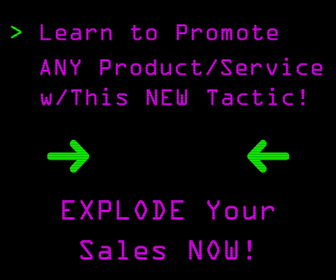 New companies often launch crowdfunding campaigns, and their most significant question is how they can raise money more quickly. It’s all the more challenging to figure out how to make money if the fundraiser happens to be on a platform that only lets a company keep their funds if they reach a specific fundraising goal. Luckily we’ve got some tips that can help an online business raise more money for a project or event. We also mention some secret techniques on else an online business can bring in more money during our free webinar training. How these tips get implemented depends on the type of campaign and platform chosen. Ready for some tips? Keep reading to learn about some advice that experts rarely reveal!
New companies often launch crowdfunding campaigns, and their most significant question is how they can raise money more quickly. It’s all the more challenging to figure out how to make money if the fundraiser happens to be on a platform that only lets a company keep their funds if they reach a specific fundraising goal. Luckily we’ve got some tips that can help an online business raise more money for a project or event. We also mention some secret techniques on else an online business can bring in more money during our free webinar training. How these tips get implemented depends on the type of campaign and platform chosen. Ready for some tips? Keep reading to learn about some advice that experts rarely reveal!
What is crowdfunding?
If you’re not familiar with crowdfunding, Shopify does an excellent job at summarizing what crowdfunding is and how it can benefit your business. If you’re trying to work hard on a project or trying to grow a startup business setting up a crowdfunding site is a great way to earn the funds you need to help your company succeed.
Traditional fundraising relies on raising a large sum of money from one source at a time. Crowdfunding, on the other hand, is a strategy that focuses on raising smaller amounts of money from a larger collective of individuals.
These “backers”—as they’re often called—can be offered a number of incentives in exchange for their support:
The opportunity to become early adopters of an innovative product
The option to pre-order a product and have a say in its development
Exclusive rewards like an early bird discount or free swag when you launch
Personal access to the founding team or the chance to support people they know personally
Equity in an early or growth stage company with high potential, though this is less common for consumer-facing brands
While every crowdfunding site has its own unique features, platform fee and overall fee structure, and user base, the core concept is the same—you submit your project to the platform with a fundraising goal and a deadline, and then campaign for support online, often through social media.
Pitch and story
Forbes mentions how great your pitch and story is on your crowdfunding page. You need to write compelling enough content to hold a person’s attention and hopefully prompt them to donate money to your cause.
It’s important to remember the context of crowdfunding and fundraising online. You’re vying for a persons attention while they’re online, and they have tons of other distractions and things pulling their attention away from you.
It’s for this reason that your initial pitch and messaging absolutely must grab your funder or investors attention right away and pull them in.
Once you have their attention, the way to keep their attention and truly engage them is to engage “the tw0 brains” as I call it. This means engaging both the Rational Brain (the “what” of what you’re doing) and the Emotional Brain (the “why” of what you’re doing).
The most effective way to do this is via telling a great story – either about yourself, the story of your project or company, or the story of your customer or who your project truly has an impact on.
If you’re crowdfunding a business and raising investment, here’s a good resource on how to pitch your startup and tell a great story, and package it all in a succinct pitch deck.
If you’re creating a rewards crowdfunding pitch, you should know that videos often double success rates for rewards campaigns. You should also be sure to have a clear and compelling “ask” of your funders that relates to your larger story and project.
Fundly expands on what Forbes recommended above by explaining how important it is to differentiate your campaign from all the others. Be genuine by telling your story and not making your pitch like every other pitch that’s out there.
Most crowdfunding platforms will generate a general sentence or two that goes along with your campaign’s URL whenever you share it via email or social media.
While this feature is convenient for quickly sending out campaign promotions, it creates a cookie-cutter experience for your followers and supporters.
If your campaign promotions sound like everyone else’s, then there’s nothing to distinguish your crowdfunding campaign from the dozens of others that are likely floating through your friends’ and family members’ social media feeds.
Instead, modify that general copy to fit your crowdfunding campaign.
You can:
Tell your story (but keep it short!).
Let donors know what the funds will go toward.
Give an example of your past accomplishments.
Talk about how much you’ve raised and how much more you need.
And more!
However you choose to personalize your communications, make sure that you keep them short. It shouldn’t take your supporters 15 minutes to figure out that you’re asking for donations. The purpose of the email, Facebook post, tweet, or other promotion should be immediately clear.
For example: Your copy should be in line with the language included in this fundraising letter template.
Get inspiration for writing compelling copy from this fundraising letter template.
Check out a complete list of fundraising letter templates.
Personalize your communications and promotions to help your crowdfunding campaign stand out from the rest! Use your posts and emails to tell your story and persuade your friends, family members, and followers to give to your campaign.
Engagement support
Hopefully, people will visit your crowdfunding page organically, but if they don’t elicitating engagement support is possible through other means. For example, Forbes tells us that you can tell people about the campaign before it even begins. Putting a bug in their ear before the campaign will hopefully prompt them to set aside some funds to donate and support your startup.
The most common mistake that first time crowdfunding campaign owners make (in both rewards or equity crowdfunding) is to not adequately engage their first level network of friends, family, and supporters.
For rewards crowdfunding, this means having people set and ready to start funding the launch of the campaign on day one. This is important because campaigns that accelerate more rapidly early on and attain a significant percentage of their funding goal in a short span of time often attract more attention as a whole over the life of the campaign.
For equity crowdfunding, supporter engagement more often means having important and notable stakeholders around the company online around the campaign and represented. This includes the entire team, advisors, board members, partners, and existing investors. Sites like Crowdfunder.com make this easy by displaying this important ‘social proof’ of your existing investors and team right alongside your investment offering online.
USA Today also says that it’s essential to be honest with yourself before a campaign begins. You can do this by being realistic as to who will donate and reaching out to those people ahead of time (as we just discussed above). It’s okay if a lot of support comes from people that you know and hopefully they will tell their friends about the campaign so they can support you as well!
“Entrepreneurs need to be totally honest with themselves upfront as to who is going to donate to their campaign. 95% of donations will come from immediate friends and immediate family. I prepped my friends and family well in advance of going live with my campaign, through regular blog posts and Facebook status updates to get them excited and ready to support as soon as I went live – and it worked! I raised 40% of my goal through pre-sale of product and straight donations within the first 48 hours of the campaign.”
– Jennifer Coulombe, Founder and CEO, Sat Nam babe
Update your crowdfunding page
If your crowdfunding page is ongoing Fundly recommends frequently updating it so that donators will see your progress and new donators and visitors will know how it is coming along.
A crowdfunding campaign is an ongoing fundraiser. Unlike a fundraising event (which is typically a one-day affair), a crowdfunding campaign can last weeks and even months and requires maintenance on your part.
Updating your crowdfunding page is important for a couple of reasons:
An updated campaign page, complete with new photos and written updates, looks more appealing than one that hasn’t changed since the day it was set up. It shows that you’re invested in your campaign (and that you want others to be invested, as well!).
When you update your crowdfunding campaign page, you keep your donors in the loop.
People who have given — or who are considering giving — to your campaign want to know the progress of your project or event. When you post updates and keep your crowdfunding campaign page looking fresh, you can give your supporters an idea of what their donations have gone (or will go!) toward.
Of course, you’ll want to write and post updates that your supporters will actually want to read. Keep your posts short and engaging, and include images or videos when/if you can.
For example: This campaign not only follows our crowdfunding tip about updating, it even includes a progress-related image.
Look how this campaign managed to provide multiple updates with images.
Learn more about this campaign example and others.
Including updates about your crowdfunding campaign can help boost your fundraiser’s success. Add media to keep your supporters in the loop about your progress!
Crowdfunding has the potential to help you grow your business and have the funds to do it. To learn additional ways to improve your business’ profits and create a sustainable income online, join us for our next free webinar training.
Sources: Forbes, Fundly, USA Today, Shopify
CHALLENGE Yourself to Profit!
Free Download: Build Your Profit-Generating Online Business With This Free Blueprint
Sign Up, follow the easy steps and You'll get the tactics, strategies & techniques needed to create your online profit stream. It's free!



